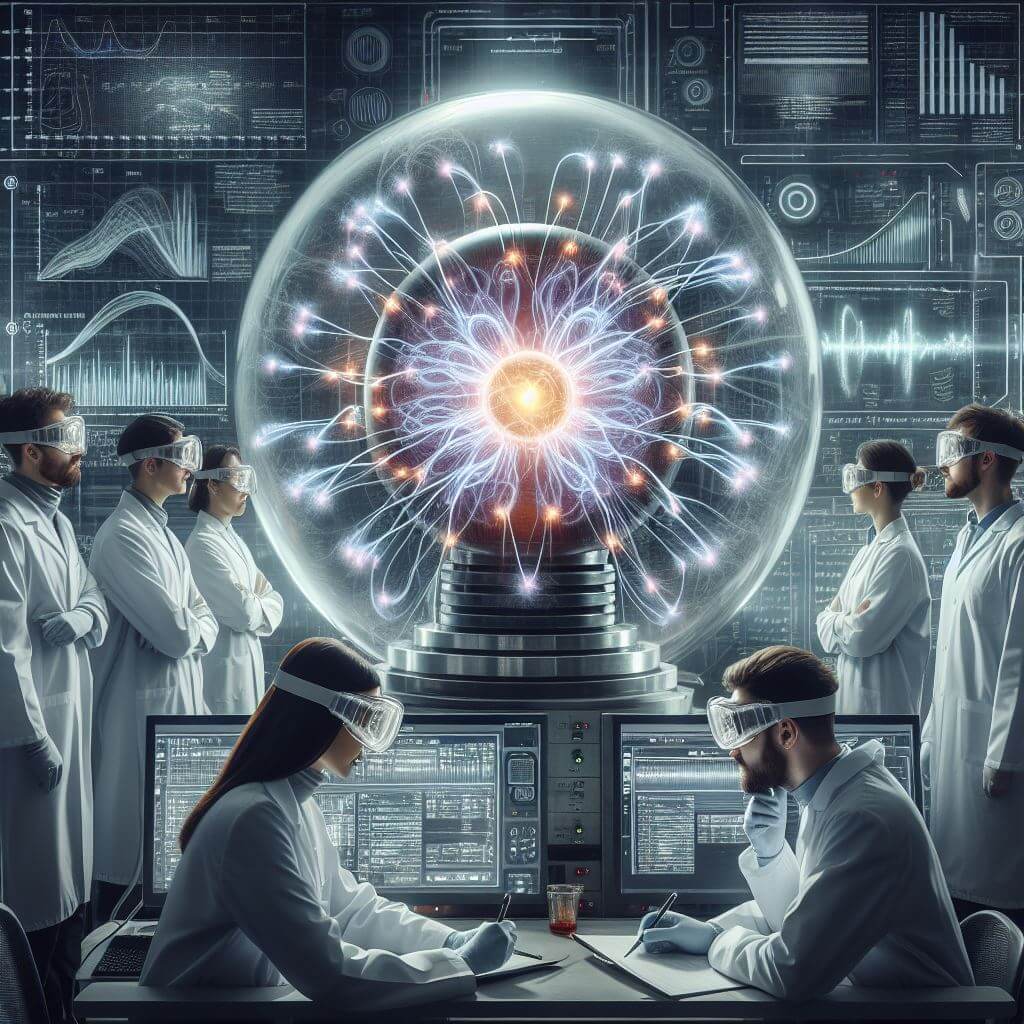From the beginning of fusion energy investigations, countless reports, scholarly articles, summaries from gatherings, and logs from past fusion reactor experiments have been compiled by experts. Immersing oneself in this vast sea of knowledge could span a lifetime or more to fully digest and understand.
Amid hands-on activities at the DIII-D National Fusion Facility in San Diego, scientists are granted a mere 10 minutes between attempts to pore over this data, hoping to tweak and enhance subsequent tests. “Each attempt at fusion concludes within seconds, leaving us a brief period to address any issues and implement adjustments before the next,” explains Joseph Abbate, a doctoral student of six years in Princeton’s Plasma Physics Program. “We’re faced with making several pivotal decisions in an incredibly short span.” Abbate notes that the team leading these experimental procedures often races against the clock to refine the following test, with modifications frequently stemming from a collective consensus among that day’s team of experts.
 Recently, researchers from prestigious institutions such as Princeton, Carnegie Mellon, and MIT have introduced AI-driven large language models—akin to systems like ChatGPT, Bard, and LLaMA—to aid fusion experts in swiftly navigating through immense datasets, thereby enabling quicker and more sound decision-making. These models offer assistance by matching characteristics of past experiments, shedding light on control systems within the apparatus, and swiftly answering queries regarding fusion reactors and the science of plasma. “Surprisingly, fusion research presents a perfect case for applying these sophisticated language models to support human efforts,” explains Viraj Mehta, a doctoral student at Carnegie Mellon and the lead author of a research brief. “On one end, there’s a treasure trove of fusion literature, encompassing papers, abstracts, and session posters, as well as operators’ notes from each trial. On the other, there’s the urgent need to rapidly access this knowledge—this is where the models truly excel.”
Recently, researchers from prestigious institutions such as Princeton, Carnegie Mellon, and MIT have introduced AI-driven large language models—akin to systems like ChatGPT, Bard, and LLaMA—to aid fusion experts in swiftly navigating through immense datasets, thereby enabling quicker and more sound decision-making. These models offer assistance by matching characteristics of past experiments, shedding light on control systems within the apparatus, and swiftly answering queries regarding fusion reactors and the science of plasma. “Surprisingly, fusion research presents a perfect case for applying these sophisticated language models to support human efforts,” explains Viraj Mehta, a doctoral student at Carnegie Mellon and the lead author of a research brief. “On one end, there’s a treasure trove of fusion literature, encompassing papers, abstracts, and session posters, as well as operators’ notes from each trial. On the other, there’s the urgent need to rapidly access this knowledge—this is where the models truly excel.”
This initiative took root in a hackathon led by graduate students at Princeton, wherein the team pinpointed ways to fine-tune existing language models to enhance their utility in fusion study. Notable for their skill in crafting text indistinguishable from human writing, these models are the product of training on trillions of written words sourced from the digital universe. Within only a handful of collaborative coding sessions, the team laid the groundwork for their approach by integrating retrieval-augmented generation into the language model framework. This enhancement involves bolstering the general dataset (typically drawn from pre-existing internet texts) with specialized data to enrich the model’s accuracy and response quality. For their purposes, the team input additional databases filled with detailed logs and annotations from past DIII-D research that isn’t publicly available online.
“During the hackathon, we thrived on immediate feedback and creative sparks from a diverse group, propelling us over any roadblocks to establish a robust foundation for our model,” shared Abbate. With their enhanced language model, the researchers could extract insightful guidance on a range of subjects, from handling specific equipment to suggesting adjustments in machinery settings. They formatted queries to compel the model to reference the precise sources for its information, boosting its trustworthiness. “It’s as if we have an extra colleague in the room, well-versed in every experiment ever run in the reactor, ready to provide input based on past occurrences,” states Abbate.
While the hackathon provided the starting point for their model’s development, the researchers have continued to refine it for practical use in actual fusion labs. Abbate, for one, is collaborating with staff at DIII-D to consider ways of integrating the framework so that every team conducting experiments can benefit from it. The team has recognized that this tool can also be applied to decommissioned fusion reactors to recover potentially lost insights, as facility veterans retire or move on. Allen Wang, a grad student at MIT, showcased the model’s adaptability by applying it to Alcator C-Mod, an MIT-based reactor that was shut down in 2016. “Machines long out of operation are enigmas, with memories of their experiments fading away,” highlighted senior author Egemen Kolemen, an associate professor at Princeton and researcher at the Princeton Plasma Physics Laboratory (PPPL). “By funneling all associated texts into a language model, we may rediscover crucial details that could address current problems with future reactors.”
Mehta emphasizes that the model can also serve as an invaluable resource for budding fusion experts who often helm sessions at reactors—roles he and Abbate have undertaken during their academic tenure. “With this tool that references every known document on fusion, we’ve provided an avenue for the upcoming wave of researchers to access information far more effortlessly than ever before,” he concludes.
